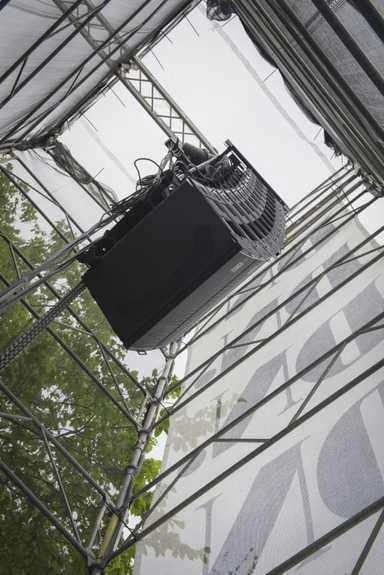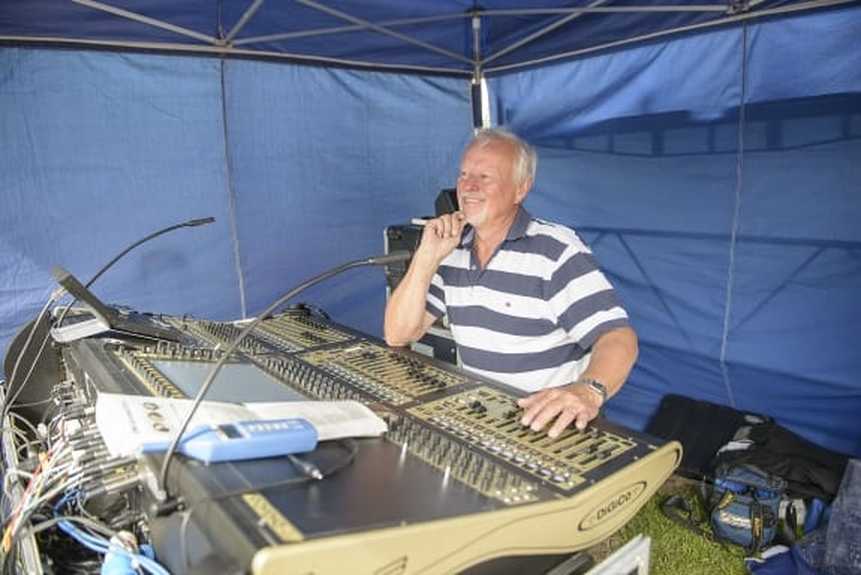DM AUDIO'S MLA COMPACT SPECTACULAR CLASSICAL DEBUT
Picnic prom for 25,000 at Stockholm Maritime Museum
For the 36th time, Stockholm's classic fans assembled for the traditional picnic outside The Maritime Museum in the Gärdet district where the annual classical prom was presented by The Royal Stockholm Philharmonic Orchestra (RSPO) conducted by Marc Soustrot.
For at least 20 of those concerts the sound has been mixed by DM Audio's Lars Wern. Fielding their new Martin Audio MLA Compact system, the leading production company ensured that not only the Orchestra but also famous Swedish soprano Malin Byström were heard as never before by the 25,000-30,000 people who attended.
Presented by actor Samuel Fröler, the comprehensive programme, including popular works by Bizet, Gershwin, Schubert, Wagner and more, was played out through 12 MLA Compacts, rigged on each side of the stage, with three DSX subs set up in a cardioid pattern on each side (with the centre sub turned around). Outfills were provided in the form of six Martin Audio W8LM Mini Line Array elements, covering one flank (with trees surrounding the other), while a delay mast, set around 55m back, featured four W8VDQ enclosures in pairs. Although the delays were scarcely needed with this system, they were deployed as a precaution, since the audience is seated at a higher elevation in the far back stands.
Lars Wern, who also designed the sound system for the event, was assisted
by Martin Audio's Martyn 'Ferrit' Rowe, who acted as system engineer. The main mix was effected on a DiGiCo SD8, with monitor and strings premixed on an SD10. Down at the stage, monitor engineer Robert Ernlund doubled as premix engineer.
All 54 violins were miked using Countryman B3's, with all other instruments assigned to Neumann KM184 and AT 3035. The vocal mic was a Countryman E6 on a Sennheiser SK2000 transmitter, while hand-held microphones were wireless Sennheiser SKM2000/965.
Lars Wern said that MLA Compact was the perfect solution for a classical orchestra, since not only were the instruments reproduced transparently but there was no bleed back onto the stage.
'Most of the stage area was programmed as 'hard avoid' in the Design file,' Wern explained. 'We predicted an SPL, 3m from the front of the stage to the farthest point of the audience (about 100m back), to fall by only 4.5db. This worked very well, since you felt like you were only a few metres away from the source even though the distance was 85 metres.'
He said he had never felt such control over the mix. 'I have not heard anything that sounds as nice as this - other systems don't come near it. But the most important virtue is controllability so you can steer it into position and keep the SPL even.'
The production team had been restricted to certain sound thresholds.
'We wanted to improve the sound and in particular maintain an even SPL over the distance of approx 85-110 metres,' he said. 'If you can increase your dynamics without exciting the dB levels that's great.
'The delays added sound to the slightly higher positions in the back of the audience area.'
He also noted the advantage of the MLA Compact's smaller footprint and much greater definition than other systems he had used on this event. 'We received a lot of positive comments after the show and the management, in particular, was very impressed. Even the local newspaper made reference to the high number of people commenting on the quality of the sound.'
Further information from:
Maureen Hayes, Martin Audio
Tel: +44 (0)1494 535312
Fax: +44 (0)1494 438669
Jerry Gilbert, JGP Public Relations
Tel: +44 (0)1707 258525
Fax: +44 (0)1707 267140


